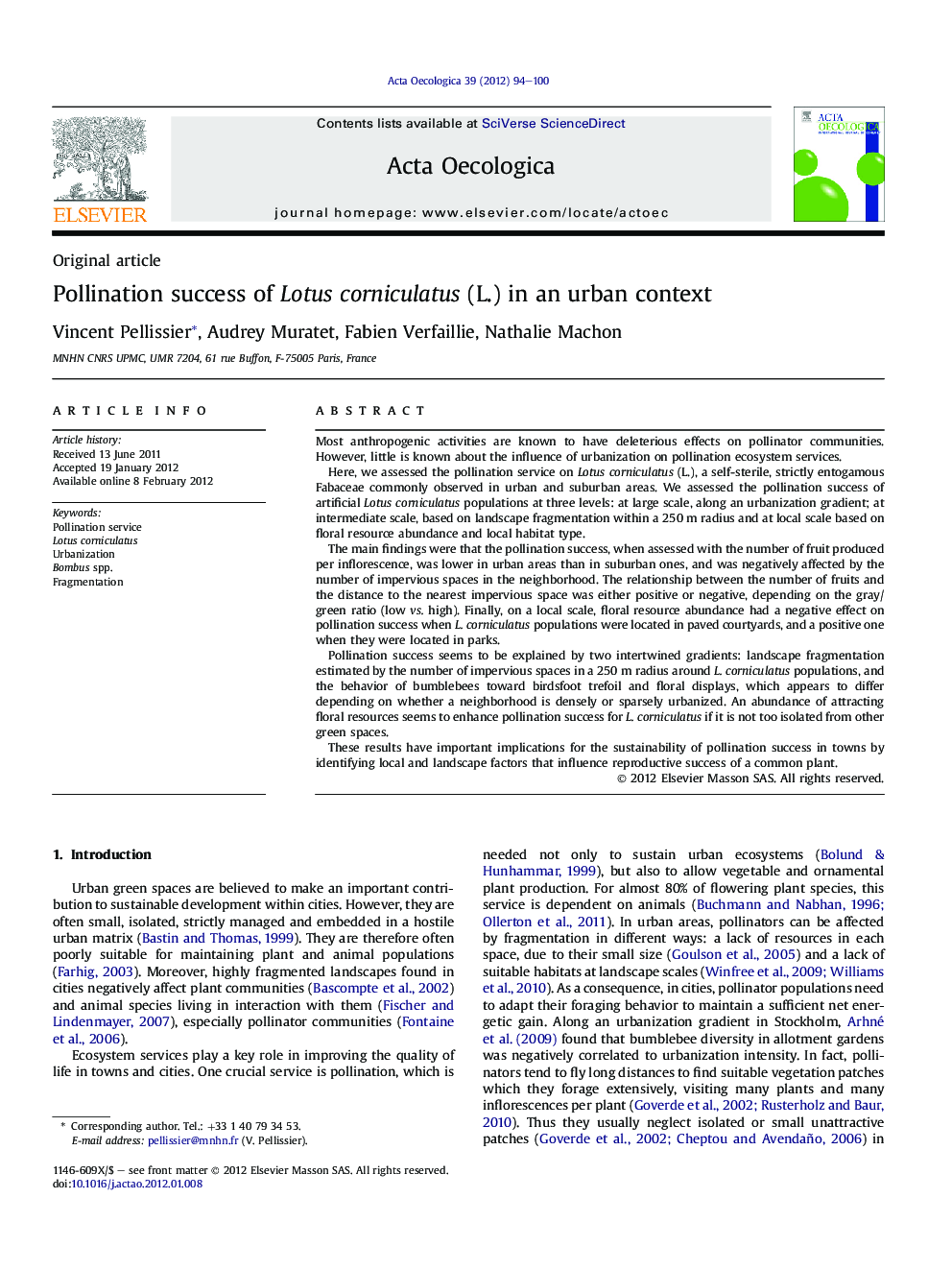| Article ID | Journal | Published Year | Pages | File Type |
|---|---|---|---|---|
| 4381267 | Acta Oecologica | 2012 | 7 Pages |
Most anthropogenic activities are known to have deleterious effects on pollinator communities. However, little is known about the influence of urbanization on pollination ecosystem services.Here, we assessed the pollination service on Lotus corniculatus (L.), a self-sterile, strictly entogamous Fabaceae commonly observed in urban and suburban areas. We assessed the pollination success of artificial Lotus corniculatus populations at three levels: at large scale, along an urbanization gradient; at intermediate scale, based on landscape fragmentation within a 250 m radius and at local scale based on floral resource abundance and local habitat type.The main findings were that the pollination success, when assessed with the number of fruit produced per inflorescence, was lower in urban areas than in suburban ones, and was negatively affected by the number of impervious spaces in the neighborhood. The relationship between the number of fruits and the distance to the nearest impervious space was either positive or negative, depending on the gray/green ratio (low vs. high). Finally, on a local scale, floral resource abundance had a negative effect on pollination success when L. corniculatus populations were located in paved courtyards, and a positive one when they were located in parks.Pollination success seems to be explained by two intertwined gradients: landscape fragmentation estimated by the number of impervious spaces in a 250 m radius around L. corniculatus populations, and the behavior of bumblebees toward birdsfoot trefoil and floral displays, which appears to differ depending on whether a neighborhood is densely or sparsely urbanized. An abundance of attracting floral resources seems to enhance pollination success for L. corniculatus if it is not too isolated from other green spaces.These results have important implications for the sustainability of pollination success in towns by identifying local and landscape factors that influence reproductive success of a common plant.
► Pollination service of Lotus corniculatus was assessed across spatial scales in an urban area. ► The pollination was negatively affected by the number of built areas. ► The impact of distance to built area depended on the urbanization intensity. ► The floral resource had a negative impact in courtyards and a positive one in parks. ► Birdsfoot trefoil pollination is increased by local resource only if not too isolated.
